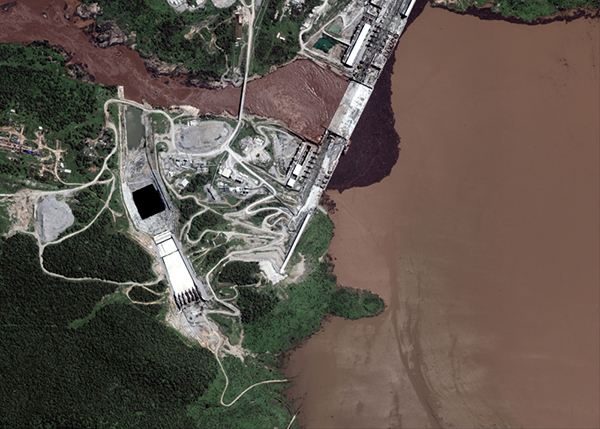Ethiopia has denied reports that it has started filling its Grand Renaissance Dam that is under construction on the Nile river, saying it was a natural occurrence.
“The GERD water filling is being done in line with the dam’s natural construction process,” said minister Sileshi Bekele.
Bekele said the water level had increased from 525 metres to 560 metres, but did not say whether Ethiopia had taken steps to store the water in the reservoir. The area has also seen recent heavy rainfall.
New satellite imagery shows the reservoir behind Ethiopia’s disputed hydroelectric dam beginning to fill.
William Davison, an analyst with International Crisis Group (ICG) said there is no evidence to suggest that Ethiopia had taken upon itself to fill the dam.
But Sudan, announced Wednesday that it has recorded a decline in the water level of the Blue Nile coming from Ethiopia.
“The Ministry of Irrigation asked specialised agencies to measure the level of the Blue Nile to confirm the accuracy of this news, and it is evident from the flow measured at the Dimim border station with Ethiopia that there is a decline in the water level equal to 90 million cubic metres per day. [This confirms] the closure of the GERD’s gates,” the Sudanese irrigation ministry said.
Sudan says it is opposed to any unilateral action taken by any party, especially with the GERD negotiations still ongoing under the auspices of the African Union.
The Grand Renaissance Dam has caused a major standoff between Ethiopia on one hand and Sudan and Egypt on the other hand.
While Ethiopia says that the dam will help bolster its energy portfolio, Egypt has raised concerns that the dam will reduce its annual share of 55.5 billion cubic meters of the Nile River water if filling goes on without a structured discussion on how it will be done.
Several talk sessions have been held but with no agreement.
Also Read
Egypt gets great road builder award
South Africa’s Hyprop boosts its shopping mall portfolio with solar energy

